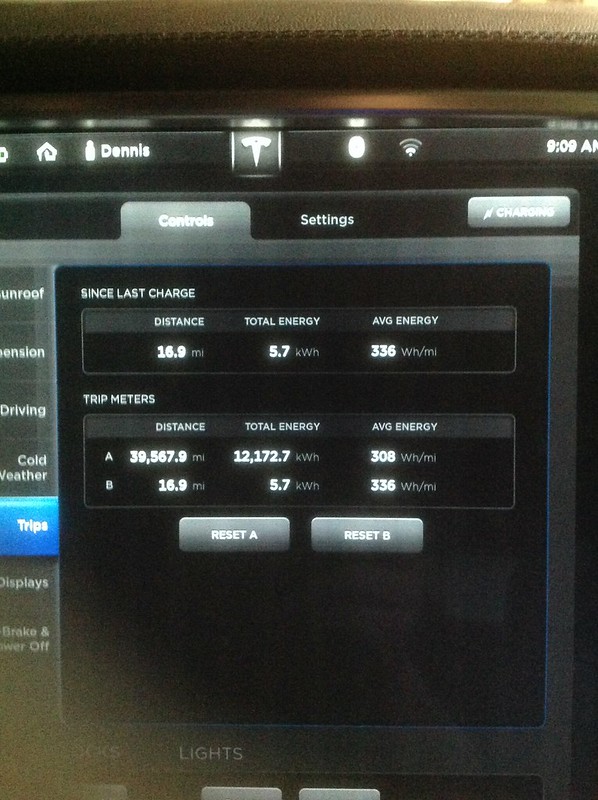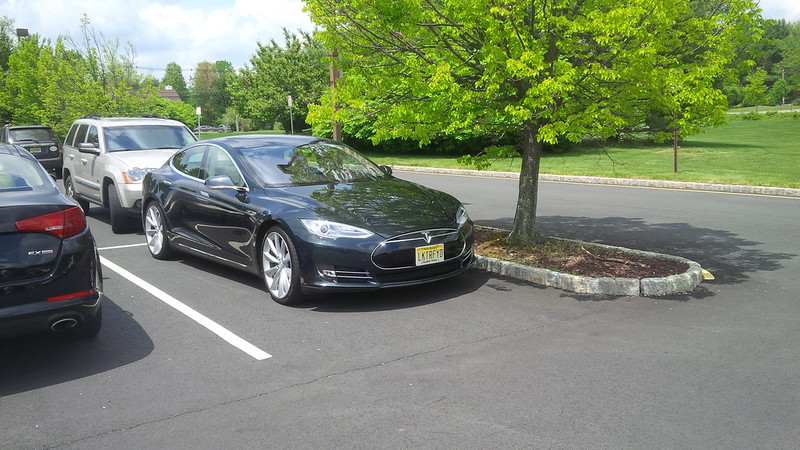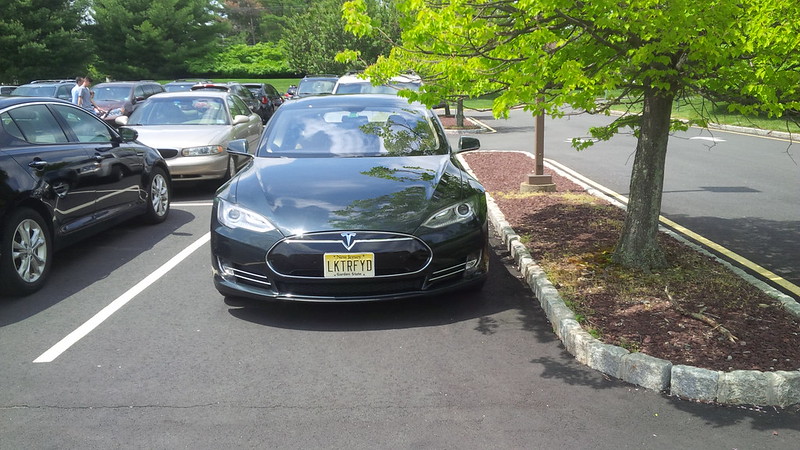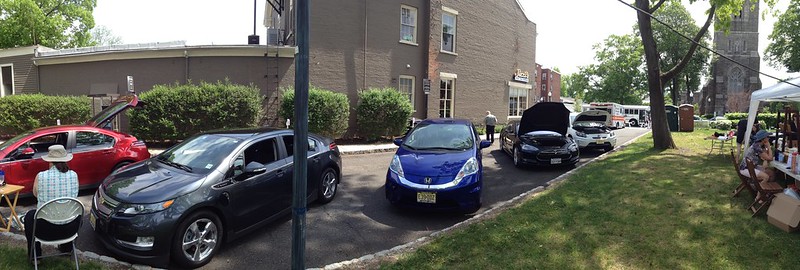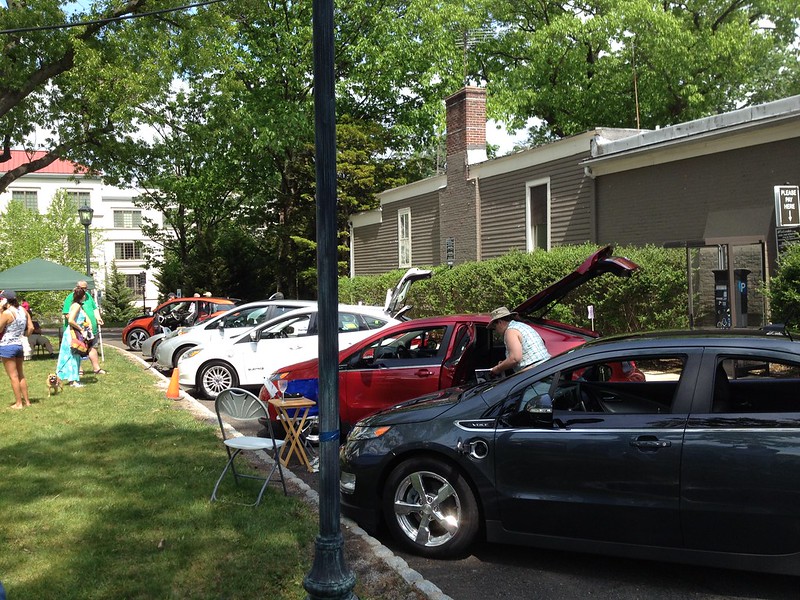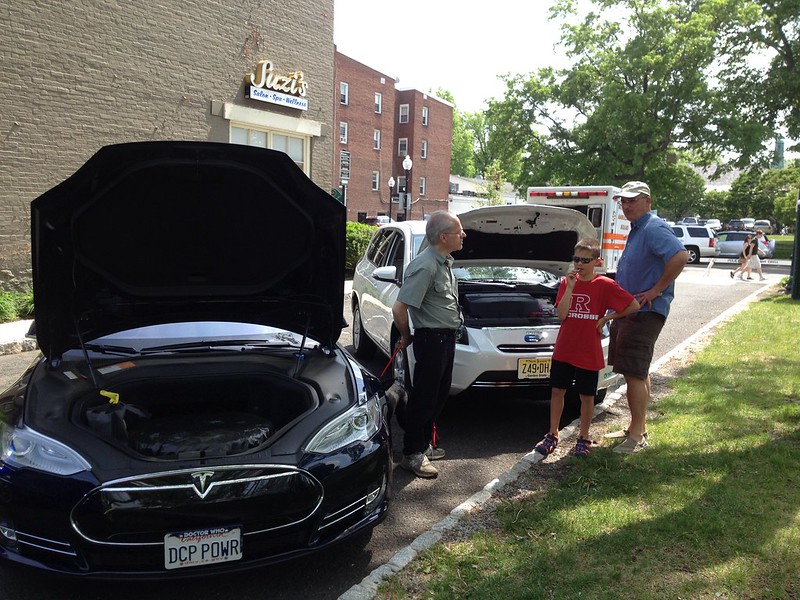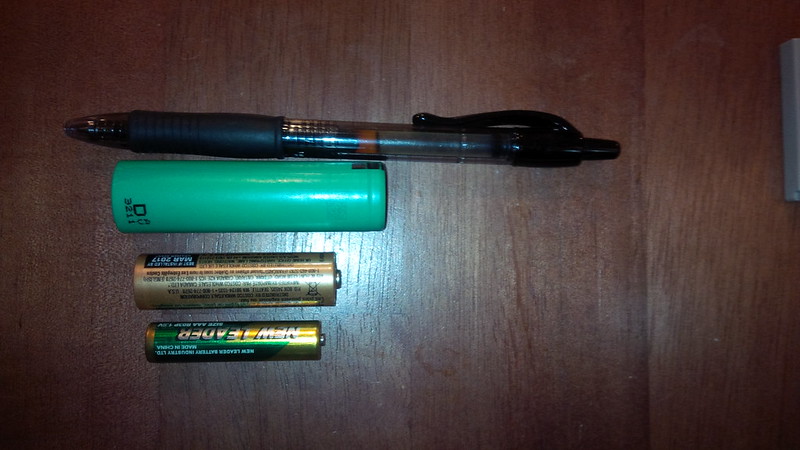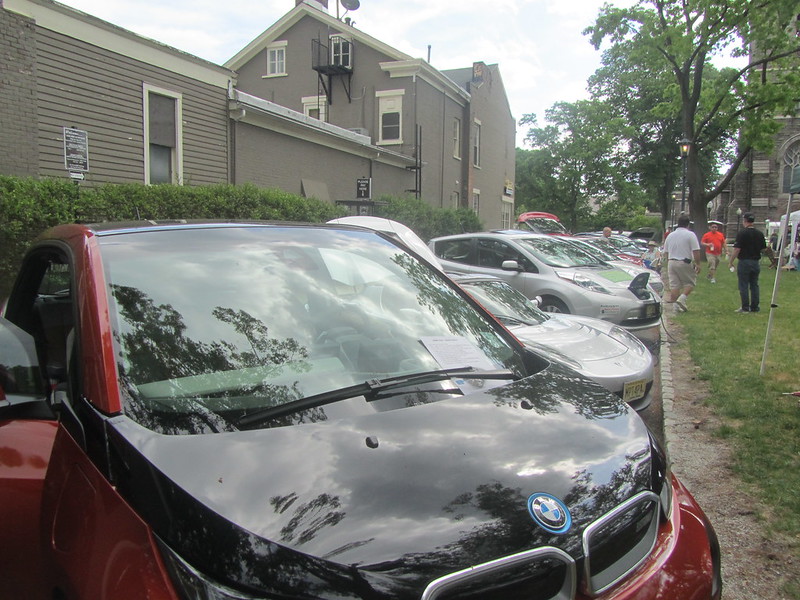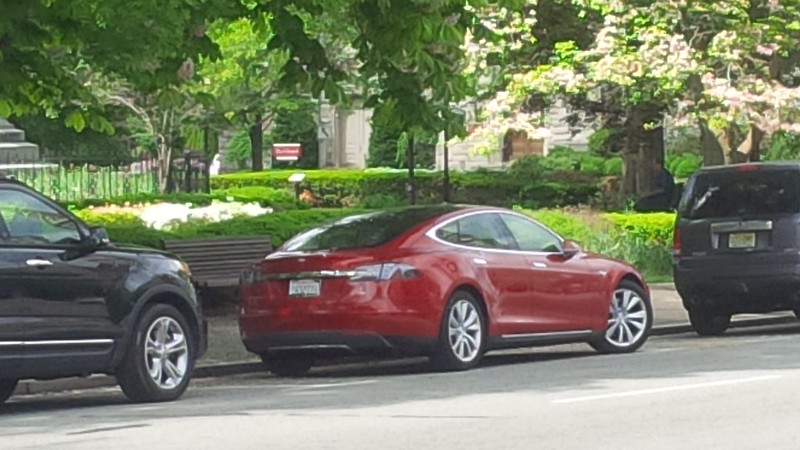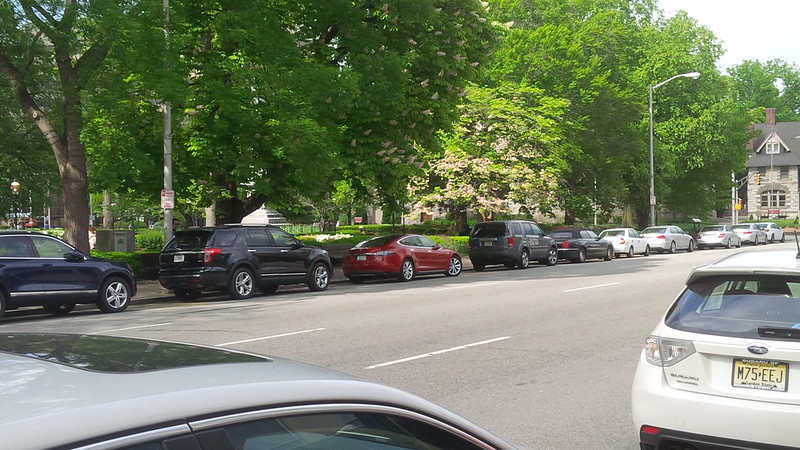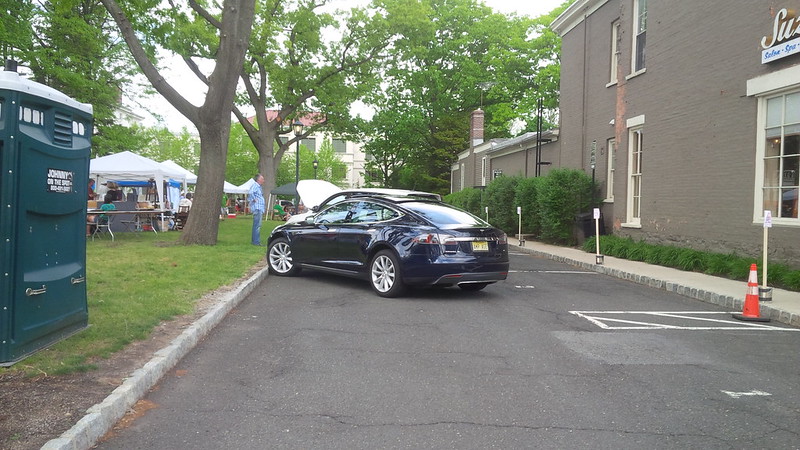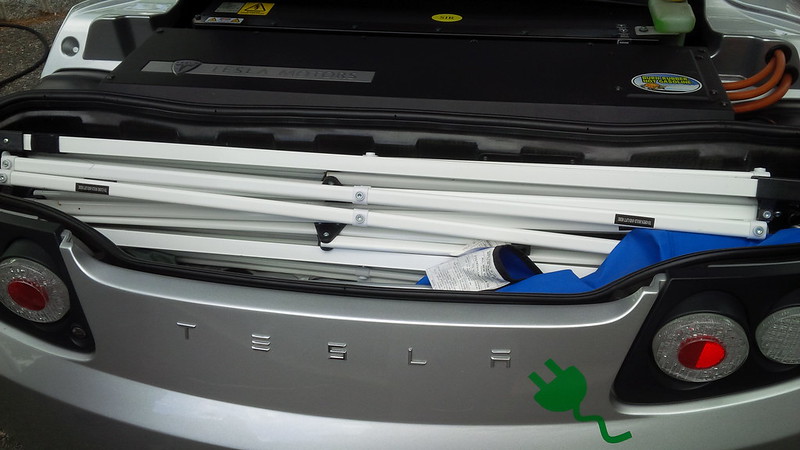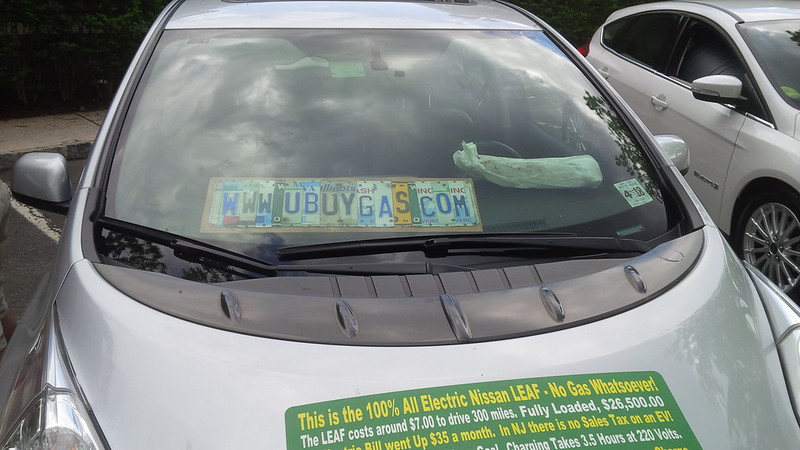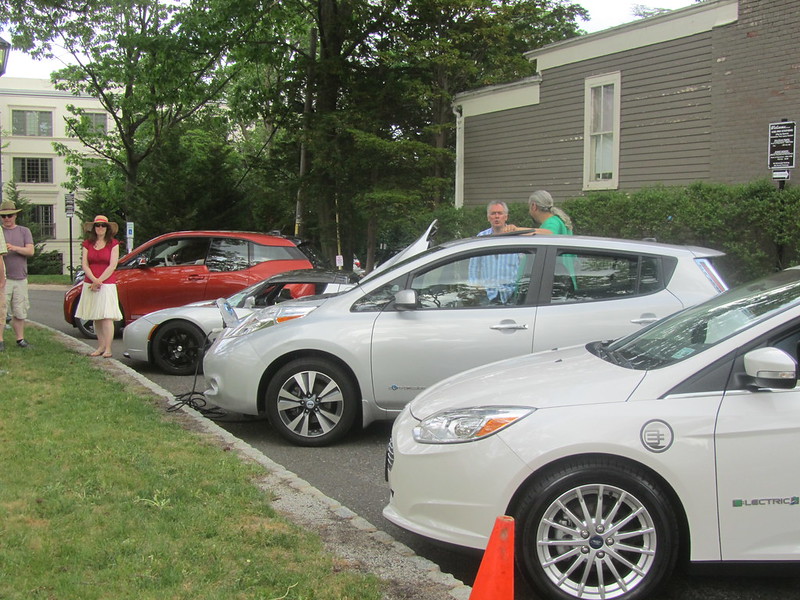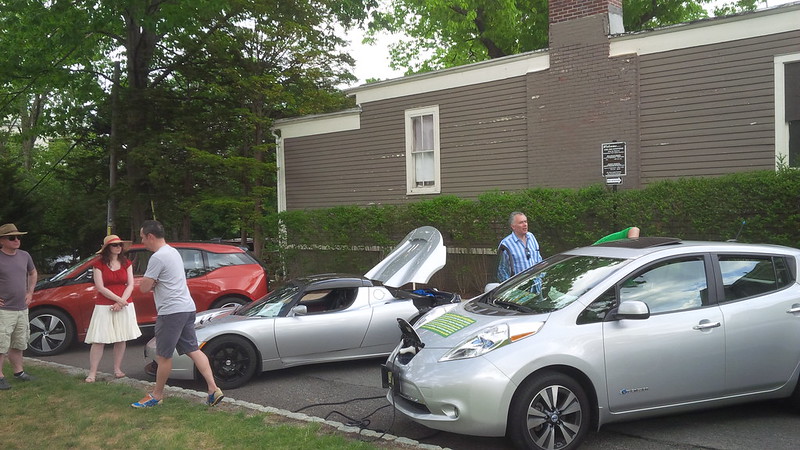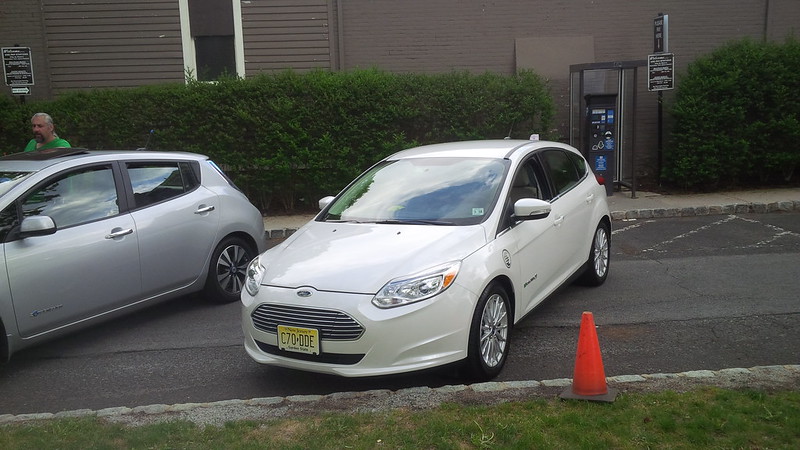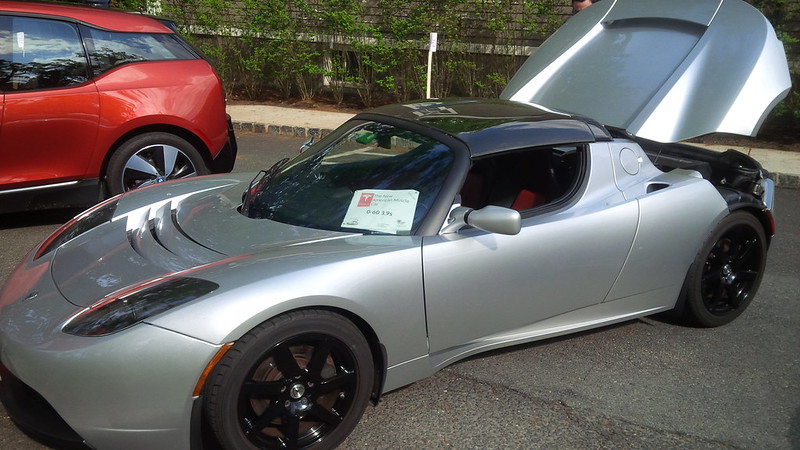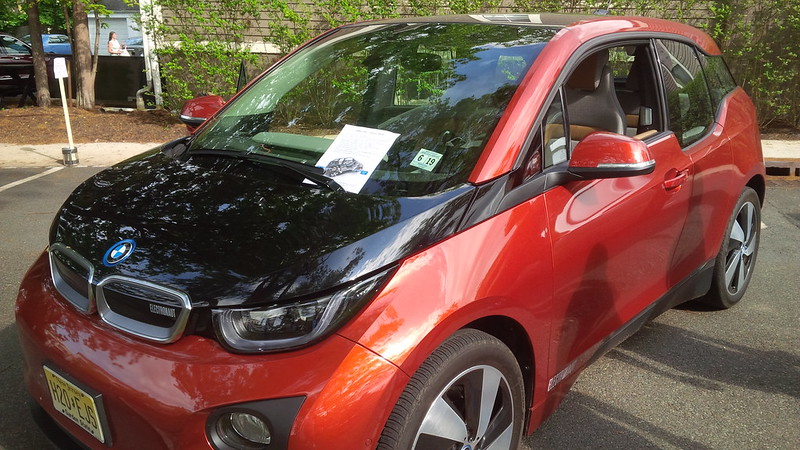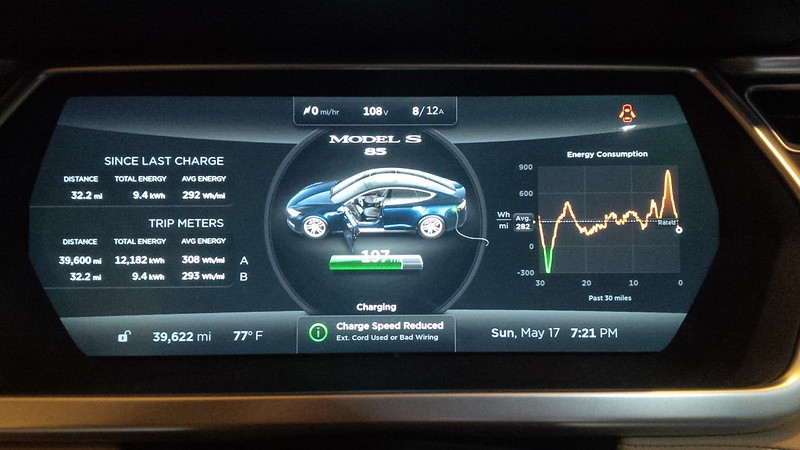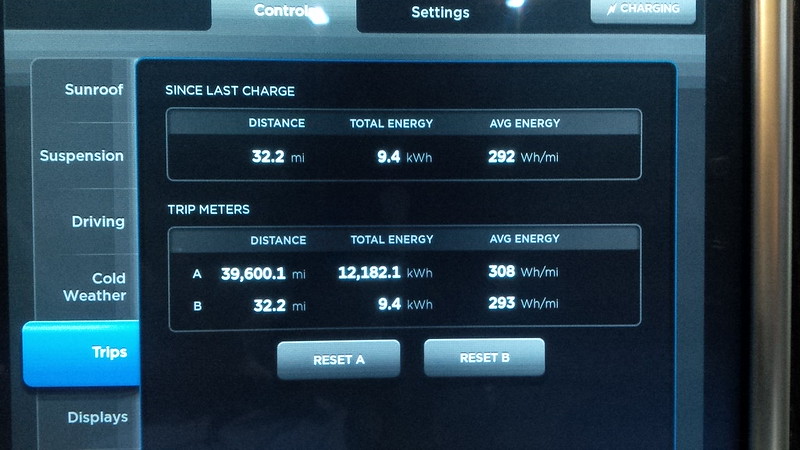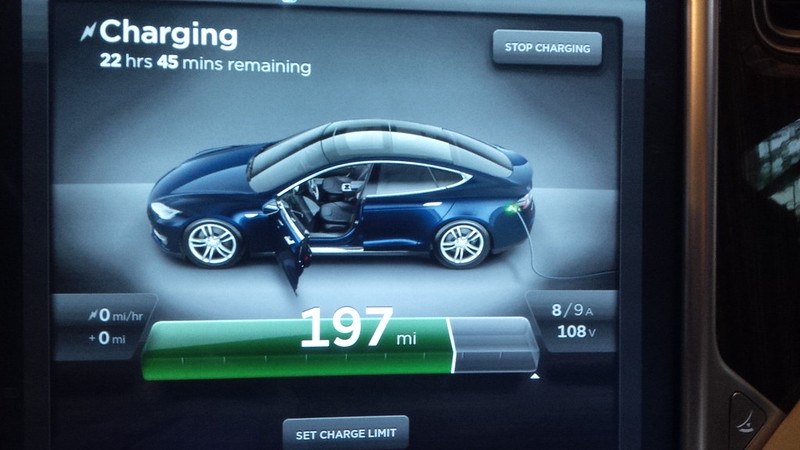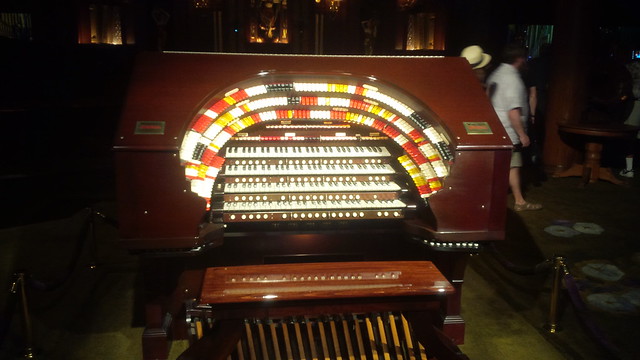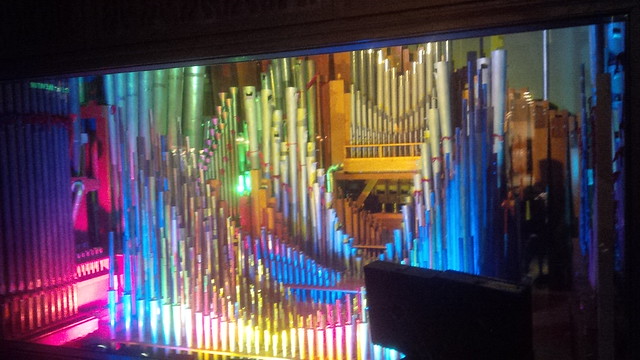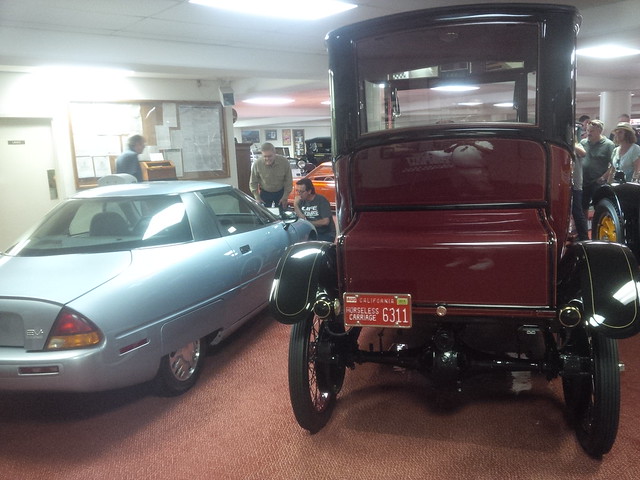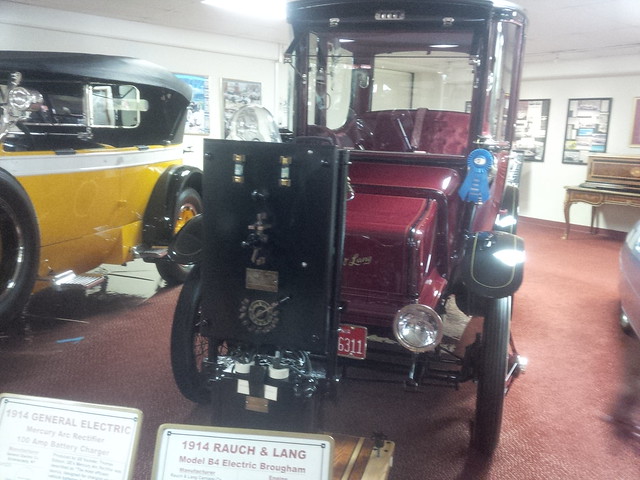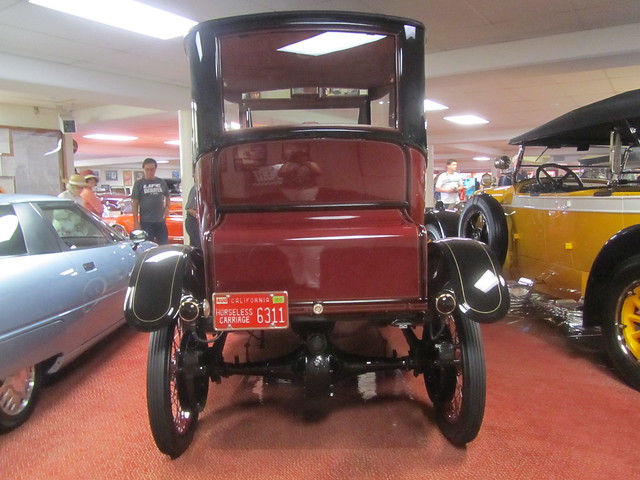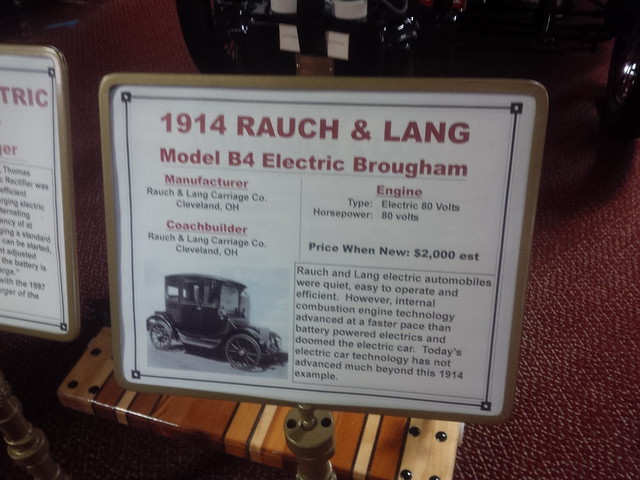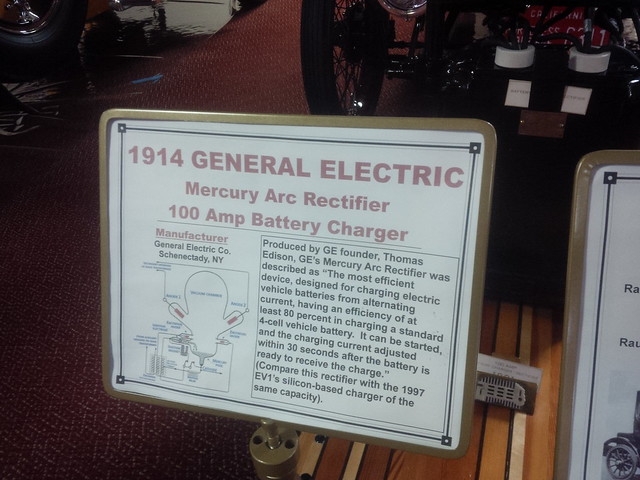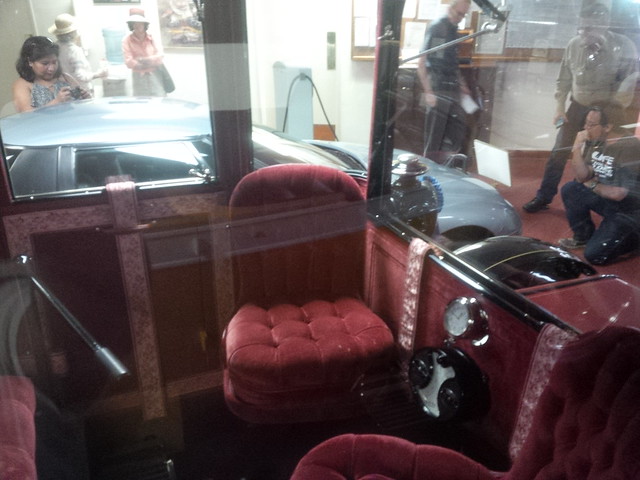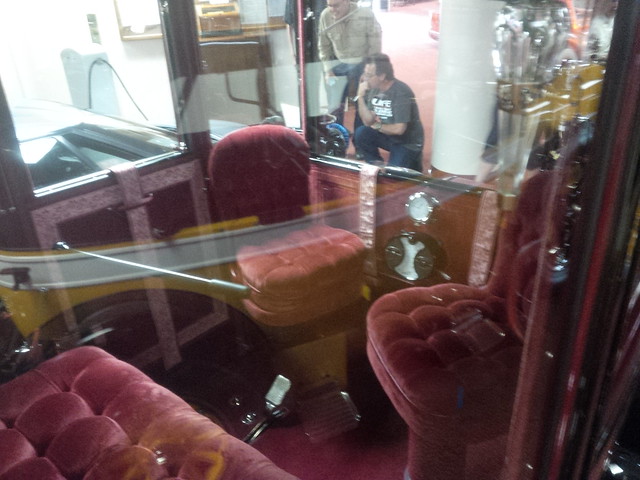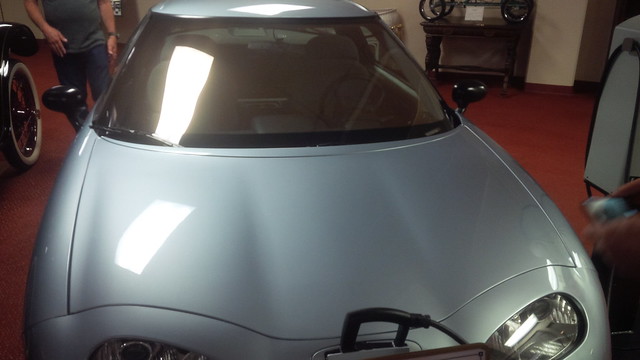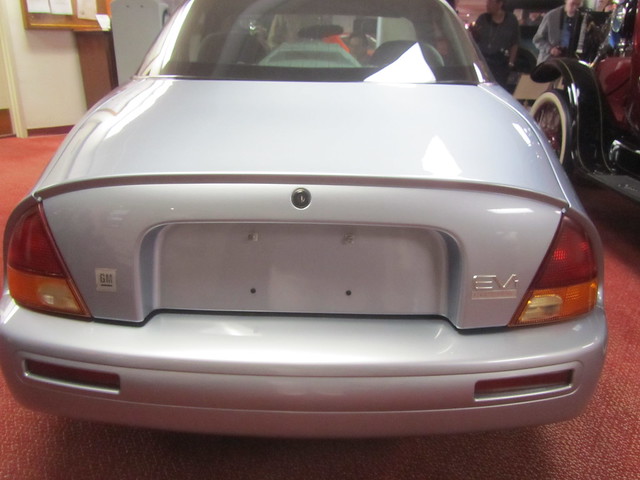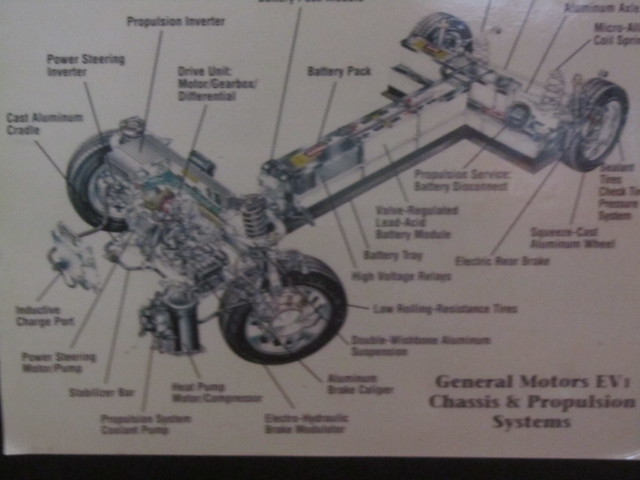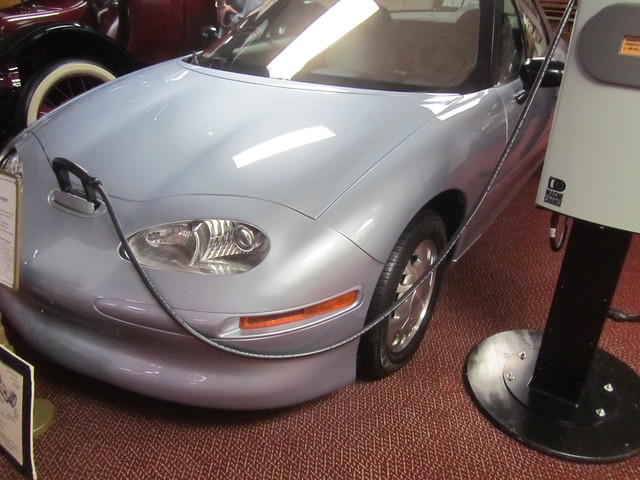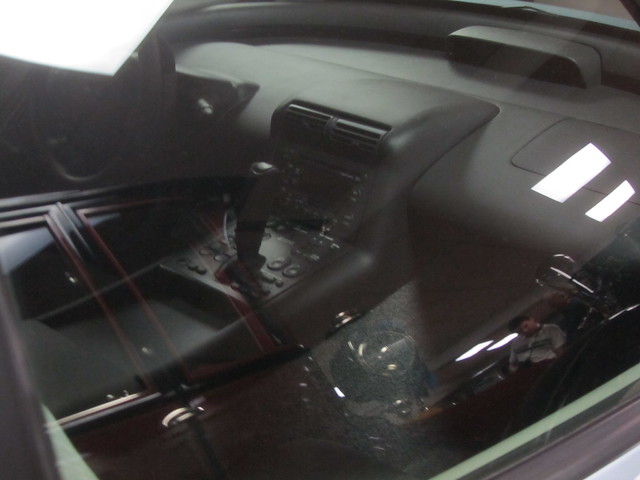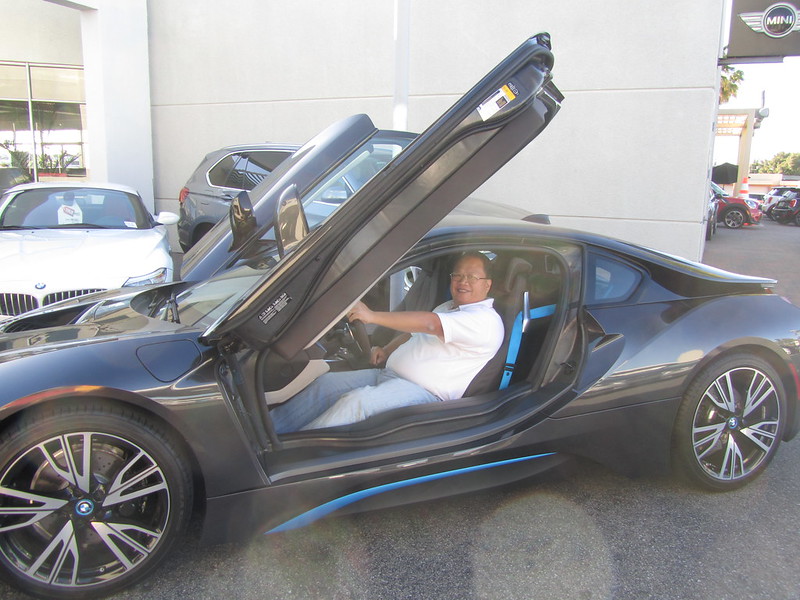A quick note of thanks to the Beatles for inspiring the title for this series of posts. This is the sixteenth in a series of posts written about our trip that will be published four weeks to the day of the trip.
Day 16 – EV Advocacy at Sustainable Morristown Sunday, May 17, 2015
Today’s plan is simple, hang out with my cousin in the morning and join the NJEAA guys at the Sustainable Morristown event in the afternoon.
The previous day, we took the time to figure out what the optimal rate of charge was for the Model S on my cousin’s 110V outlet. We placed it at 8A and the charge held. As I previously mentioned, the Model S will reduce the speed that it charges when it senses stress on the wire, and here is a picture of the Model S automatically reducing speed of charge (see the “Charge Speed Reduced” message on the dash below.)
To prepare for the Sustainable Morristown event, we decided to go ahead and wash the car. After all, NJ is not in a drought, so took the opportunity to clean the car and present it in the best possible light (if you want to see how I usually wash the car @ home, you can see my first Periscope (by Twitter) attempt to instruct folks on how to do a car wash of the Model S.)
In the meantime, before we went to the EVent, we found the communities near Morristown, NJ to be a Random Model S spotting bonanza.
The first one we spotted was at the church parking lot.
We spotted the LKTRFYD NJ plates parked across from us.
On the way to the Sustainable Morristown event, we spotted a blue Model S on Speedwell Avenue heading the opposite direction from us.
Sustainable Morristown
The event was held at the U Driveway of the Vail Mansion. The driveway was barricaded, but we were let in by Airton Azevedo. As soon as we parked the car, Chris Neff introduced me to a reporter covering the event for the Daily Record.
Unfortunately my comments didn’t make the reporter’s article. But darn, I was good. I wonder if she didn’t like my answer to the question regarding range anxiety. (I don’t really have it, notice the California license plate?)
Got a few good panoramics of the cars that participated in the event. Most of the NJEAA folks that was at the EV Meetup the previous Monday were here. Unfortunately, I missed Tom Moloughney’s “red” i3.
Pay attention to the 10 x 10 Green Tent that is at the left edge of the picture below. Michael and Pamela Thwaite do a lot of EV advocacy, and they were smart enough to set up some “shelter” from the sun as they interact and educate with the public.
While we were hanging out at the EVent and talking to the public, I spotted a third Silver Model S that drove by on the street. This car wasn’t participating on the EVent, it seemed to be a Model S that is just passing by.
At the EVent, I was fielding a lot of questions about range. Hopefully, bringing a California Model S to a New Jersey event hopefully helps hammer home the point that electric vehicles are not only limited to “short trips.” My wife and I met with a lot of people, both locals and folks from further away, like Westchester County, New York. People were intrigued by the cross-country travel aspect of the car as soon as they realized that we were there from California.
We were the “go-to” folks to field the question of range anxiety, which [Spoiler Alert] we don’t have. We had a lot of folks that approached us because, for a while, we were the only Model S at the event and they had questions for that, before they notice the California plates. To which many first thought that we worked for Tesla (to clarify, again, we don’t.)
Where’s the engine is another common question at these EVents, so we like to open the frunk and show the lack of an “engine.” Additionally, people really enjoyed seeing the little 18650 Panasonic battery (see below comparing it to a pen, AA, and AAA batteries, it’s the green one) that we carry around for these types of EVents.
My cousin and his wife hung out with us a little, since they had an event in the evening, we walked them back to where their car was parked.
The fourth Random Model S sighting. Though with the California Manufacturer’s plates, that tells me that it’s a Service Center Loaner.
The Sustainable Morristown event wasn’t all just cars.
Some great chalk art at the entrance of the event.
But, you know me, I’m kind of an EVaholic and Andrea Giangone and his blue Model S joined the EVent. Andrea’s Model S has a cool little mod.
There were some blue accents on the Tesla logo on the trunk of his Model S.
Ben Rich showed up later with his modified 2014 Zero Motorcycle.
This one is modified to have faster charging. Notice the two chargers on the side of the motorcycle. He obtained and installed two Elcon 2.5kW chargers from Hollywood Electrics. So, adding 5 more kW of charging to the built in 1.3kW charger of the motorcycle yields him 6.3 kW of charging speed. Not bad.
Many were quick to point out how sharp the mounts were that Ben installed to connect the chargers to his motorcycle. We guess he doesn’t need to carry a passenger with him.
Remember the 10 x 10 tent that Michael and Pamela Thwaite use for their EV advocacy, it’s even more impressive how they carry it. The trunk of a Tesla Roadster is one of the smallest trunks that I’ve ever seen. It’s design is such that people can fit one set of golf clubs in it. The Thwaites, however, are expert at packing things and their chairs and tent fit in the back of the roadster.
Aside from the ZeroMC, there was also a Fit EV that was parked beside our Model S. Airton’s 2nd Generation RAV4EV and then the Andrea’s Model S.
Sal Cameli‘s Nissan Leaf has a URL for his www.ubuygas.com website.
We spotted a second Ford Focus EV of the trip.
A great shot of the rears of the EVs.
A better shot of the second Ford Focus EV of our trip.
Michael Thwaite’s Roadster.
Chris Neff’s BMW i3.
Another shot of Ben’s Zero MC. Like we previously mentioned, watch out for those metal blades that he mounted those two chargers on.
Airton bidding us farewell until next time. Perhaps Tony Williams will figure out how to enable the 2nd Generation Toyota RAV4EV for supercharging. He’s already on his way to getting it running on CHAdeMO (or as he calls it the JdeMO).
Randolph, NJ
It was a full day and we plugged in for the night and started charging at 8A again.
Go on to Day 17. Click here.

